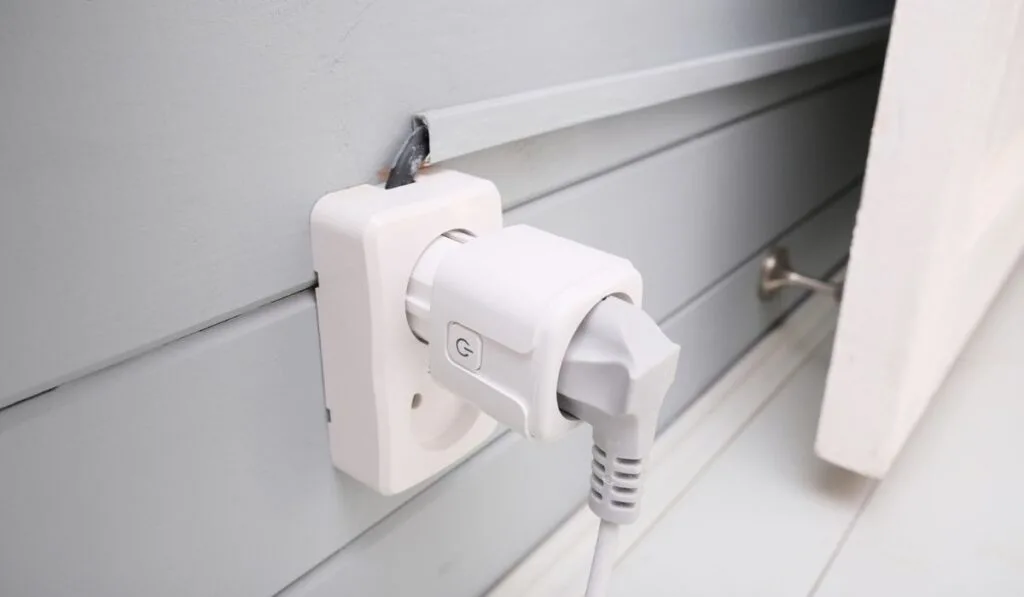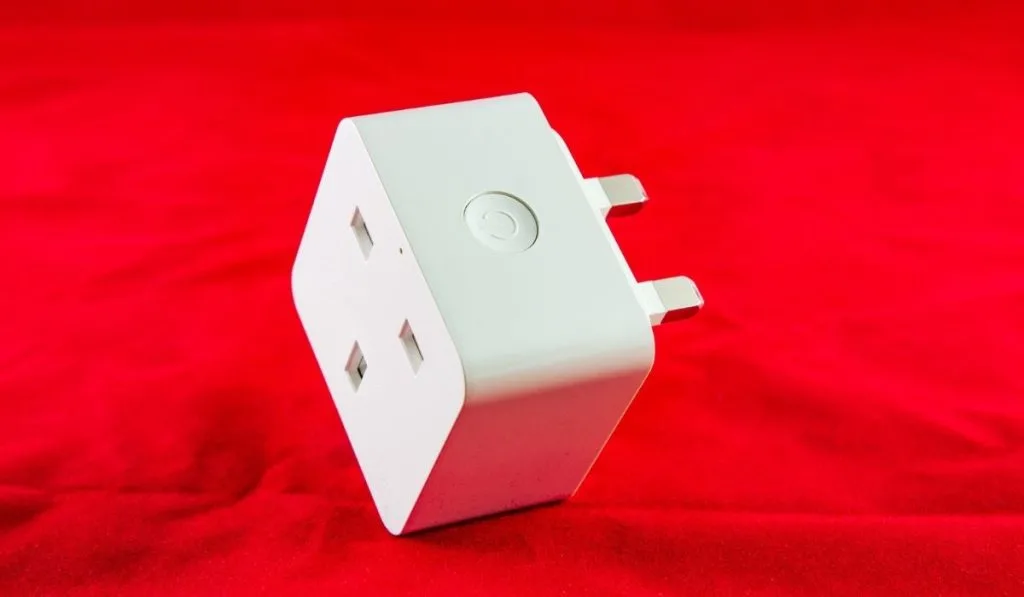One of the most appealing elements of a smart home is the promise of increased energy efficiency. They can help you automate many things around your house, as well as manage your energy consumption more carefully. Smart homes will show you where you’re wasting the most energy, and knowing this will help you find ways to lower your electricity usage.
Smart plugs typically use just 1 watt of electricity (or less) when they’re in standby or in active use. This will typically cost a few pennies a month. You won’t notice the addition of smart plugs on your electric bill, even if you’re using a lot of them.
Continue reading this article to learn how smart plugs operate and how much energy they consume. We’ll also look at how smart plugs can save you money, if smart plugs that use different house smart standards consume varying amounts of energy, and how you can save energy.
How Do Smart Plugs Work (And Use Energy)

A smart plug is simply a power plug that acts as a remote-controlled power switch. They sit between your power socket and wall outlet. To use a smart plug you need the following things: a smartphone app to control it, an internet connection, and a smart plug gadget to control any plugged-in appliance.
How to Use a Smart Plug
To get started, plug your smart plug into the wall outlet. Using the internet, connect your smart plug to the relevant application.
You can plug any device into a smart plug- anything from a coffee machine to a Christmas tree. When you need to control the device you’ve plugged in, activate and deactivate the smart plug via the app. The plugged-in device will turn on or off accordingly. You can also use Google Home or Alexa from Amazon to give voice commands.
Smart plugs have safety features on their input and output ends. The way they work is using similar components to that of a small computer; a central controller board, or circuit, receives all your commands. Once it receives them, it responds to your commands, switching on or off the gadget.
You can easily know how much electricity your appliances are using if you use your smart plugs to monitor energy usage. The smart plug will detect how much power your appliance consumes and then send a report to your app, where you can see how much electricity was used.
Here are some excellent energy monitoring smart plugs:
- Wemo Insight Smart Plug with Energy Monitoring (on Amazon)
- Eve Energy – Smart Plug & Power Meter (on Amazon)
How Much Energy Do Smart Plugs Use?
Smart plugs do not consume a lot of energy on their own. They use roughly 1 watt when they are not in use. That’s around 8.76 kilowatt-hours in a year. Don’t be alarmed by that number! Given that the majority of your household appliances consume electricity in kilowatts, this isn’t much; after all, one thousand watts make a kilowatt.
When plugged in, but not in use, the consumption rate of a smart plug also depends on the type of connection being used.
- WiFi- 1-2 watts when using standby mode
- Z-Wave- 0.3-0.5 watts when on standby
- Zig-Bee-0.3-0.6 watts when on standby
Do Smart Plugs Using Different Smart Home Standards Use Different Amounts of Energy?

Yes, you will find that smart plugs use different amounts of energy when operating under different smart home standards. Let’s have a look at the three home automation technology operating standards used.
Zigbee:
When in standby, a smart plug that connects through Zigbee will consume 0.3-0.6 watts. It operates at a frequency of 2.4 GHz. This frequency is the one that is used by the majority of smart home devices. Most smart homeowners prefer Zigbee because of its low power consumption and high security.
WiFi:
Because it’s the most frequently used network, this is the one most people recognize. As a result, the majority of smart home devices will link via smartphones or hubs. When in standby mode, smart plugs linked via WiFi use 1-2 watts.
However, because most household appliances use WiFi, signal interference and traffic congestion are a possibility.
Z-Wave:
The frequency of Z-Wave is 908.42 MHz. It can only make connections with devices that are four hops distant. Z-wave consumes less energy and does not interfere with your wireless network. When connected to Z-wave, smart plugs require 0.3-0.5 watts when in standby mode.
Unfortunately, while Z-Wave uses less power, it is a little slower. It’s also worth noting that it’s infamous for interfering with baby monitors and cordless landline phones occasionally.
Can Smart plugs Save You Money?
Yes, you can save money by using smart plugs. It can be a significant sum if you directly convert the energy you can save by using the smart plug into dollars.
Consider the following scenario: you have 50 smart plugs. Each smart plug consumes 1 watt when in standby mode. Of course, if your devices are active, they consume more energy. As a result, 50 smart plugs will use 50 watts of electricity.
Even something as simple as a charger requires 4 watts in standby mode. You could save about 3 watts if you put your chargers into a smart outlet. What if every smart plug came with a charger? You may be able to save 3*50=150 watts. Do some quick math to discover how much energy you might be able to save.
Take, for example, outdoor lighting. You may program the lights to turn on when the sun sets using a smart plug, and schedule them to turn off at 2 am.
Unless you woke up to turn off the lights manually at 2 am every morning, these lights would have stayed on all night until you switched them off the following morning. See how much electricity you would be saving.
Do Smart Plugs Use Electricity When Turned Off?
Yes, though not enough to be worried about. Especially considering how much electricity your appliances use generally. How do you know which devices consume electricity even when they are turned off?
Consider the following suggestions.
- Look for devices or appliances that have remote controls or continuous digital displays like Christmas lights.
- Devices that, even when they are turned off, continue to feel warm to the touch.
- Appliances that have soft-touch keypads or rechargeable batteries.
Ways of Conserving Energy in Your Home
The quantity of electricity used by devices or appliances when they are not in use but plugged in is known as phantom loads or vampire power. Smart plugs are better for energy conservation than phantom loads or vampire power since they use less energy overall.
Consider all of the devices or equipment you typically leave plugged in even when you’re not using them. You’ll be surprised at how much energy you’re wasting if you add up all the energy they consume.
Why not put some of the following suggestions into practice to avoid all of this?
- Unplug all devices that use electricity when not in use. Of course, not all devices; the refrigerator should not be one of the devices you unplug.
- Consider all the appliances that you can replace with modern energy-friendly models.
- You can also connect all the appliances that are usually in use, primarily when you are at home to a power strip and then connect it to a smart plug.
Summary
Making your home smart would put you ahead of the game with the globe yearning more and more for smart cities and communities. Conservation of energy is becoming a primary priority. We’ve written several articles about smart plugs. So search for other articles on our website if you’d like to learn even more!
